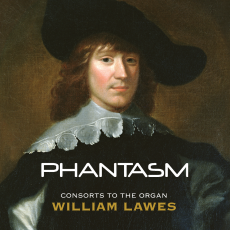Phantasm - Lawes: Consorts to the Organ - InfoDad.com
The music of William Lawes (1602-1645) partakes of much the same sorts of sounds, for all that it is somewhat later than the lute works. The Consorts to the Organ heard on a new Linn Records SACD are five-part and six-part "sets," in three movements or four, for strings as well as organ - Renaissance precursors of the great Baroque suites of Bach and Telemann. Certainly simpler and more transparent than the later works, they have a directness and charm that are altogether winning. And in fact they pushed beyond the traditional musical rules of their time, as Lawes strove with considerable success to produce freer and less-rigid music than many of his contemporaries created. Often setting his Consorts in minor keys - as is the case with four of the seven on this recording - Lawes varied the structure of individual works very considerably. The five-part, four-movement set in C minor, for example, contains a Fantazia, Aire, Paven [sic] and another Aire; but the three-movement one in A minor contains two Fantazias (the first being labeled "Fantazy") and an Aire. An occasional movement bears an unusual title and form: "On the Playnsong" in the G minor five-part set and "Inominy" in the B-flat major six-part set. All Lawes' music is carefully, even elegantly constructed, with contrapuntal and fugal elements that were well ahead of their time. And Lawes had a most unusual approach to his themes, not hesitating to juxtapose intense, even peculiar ones with simple ones that would not be out of place in a pastorale. Indeed, after Lawes was killed during the English Civil War that led to the rule of Oliver Cromwell, his music rapidly fell into disfavor - largely because he had been employed by Charles I but also because what he wrote was considered simply too strange. The members and guests of the ensemble Phantasm take great delight in bringing this music back to life, not going out of their way to highlight its unusual elements but certainly not downplaying them either. The result is a very fine recording of works that not only carry the sound of long ago but also look much farther into the future then do others of the early to middle 17th century.

